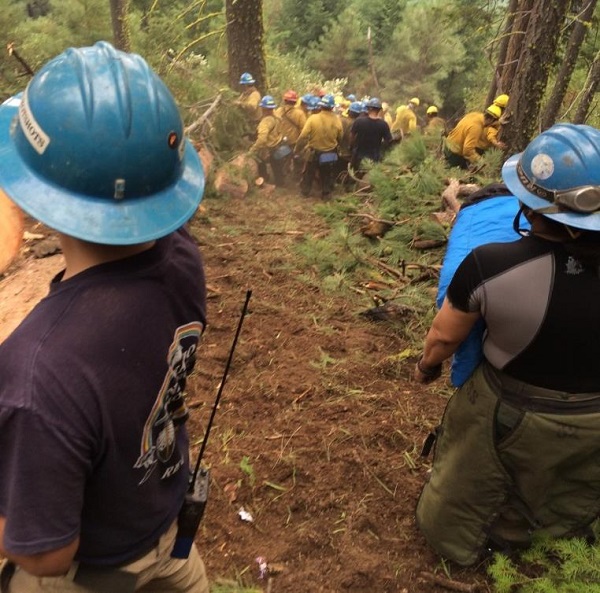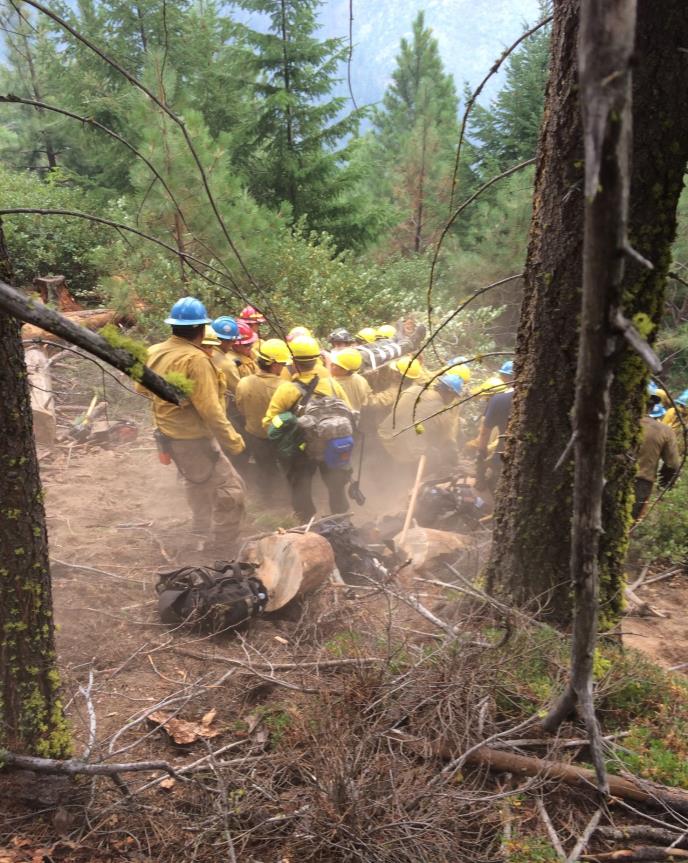You are viewing ARCHIVED content published online before January 20, 2025. Please note that this content is NOT UPDATED, and links may not work. Additionally, any previously issued diversity, equity, inclusion or gender-related guidance on this webpage should be considered rescinded.
Author: Robyn Broyles
The Navajo Interagency Hotshots were recognized for their dedication and foresight to being fully prepared to deal with medical emergencies in the field by starting (and continuing) their own EMS training program (since 2011) and for putting that emergency medical training into practice in August 2014 when two interagency hotshot crew (IHC) members were struck by a log rolling down a hill on the South Cle Elem Ridge fire in Washington State.
The rolling log dragged and then pinned the two IHC members. The crew immediately activated their “incident within an incident plan” and contacted both the Division Supervisor and the Incident Commander. Transportation was quickly organized while others assessed the two patients for injuries and began treatment. While immediate injuries were not life-threatening, the stabilization, packaging and medical evacuation of the patients proved challenging.

Progress of an emergency carry-out by the Navajo Interagency Hotshots. Patient #2 is moved downhill for medical transport to drop point 1. Photo: Randy Ostman, on-scene Safety Officer.
The crew’s decisions for patient care and stabilization proved to be fully appropriate and helped minimize further, unnecessary on-scene medical care that could have compromised the patients’ condition by others who arrived on scene. The crew then continued to help to expedite the patients’ evacuation to a Seattle trauma center.
This training was a success in large part due to Wilderness First Responder training BIA Interagency Hotshot Crewmembers take annually. The training teaches wildland firefighters how to manage complex logistical medical transports; mitigate extreme environmental conditions, identify and use improvised equipment and how to interface with local emergency medical support responders. In short, firefighters are taught how to think creatively and act quickly so they can perform life-saving actions to get their fellow firefighters to definitive care.
To learn more about the Wilderness First Responder training, visit: bia.gov/nifc/safety/firstresponder/index.htm
For Immediate Release: March 1, 2017


